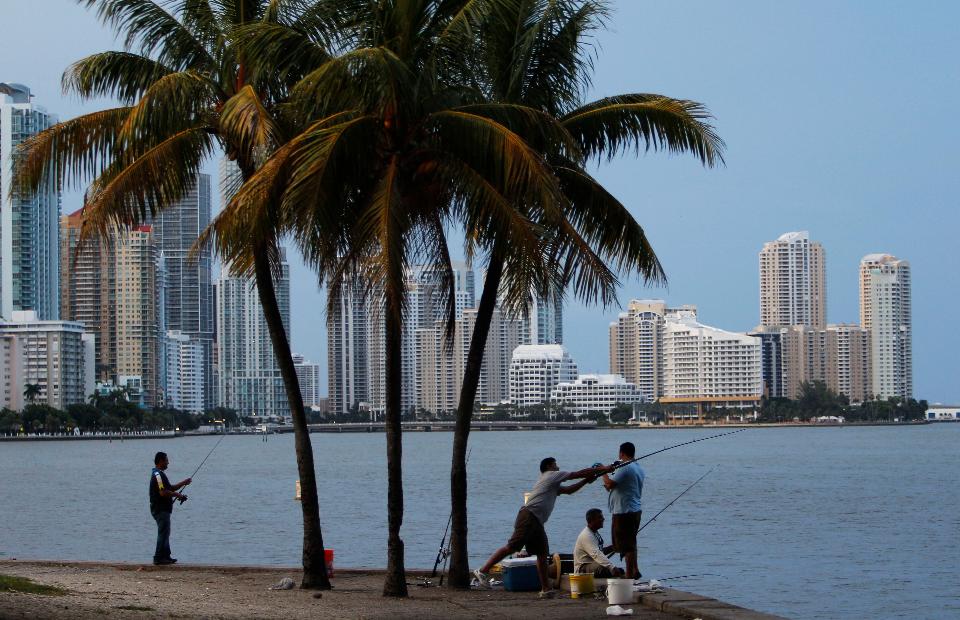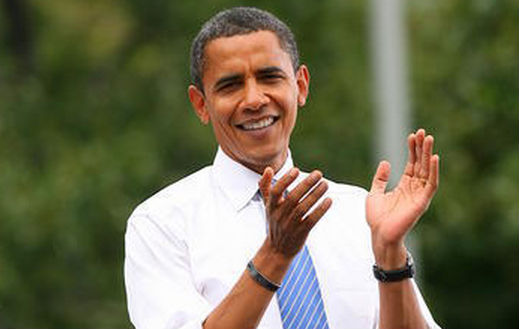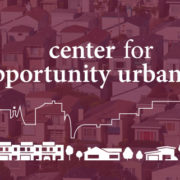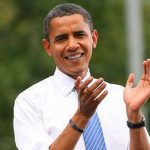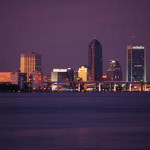BUSES: RIDE THE FRIENDLY ROADS?
by Joseph Schwieterman 01/29/2015
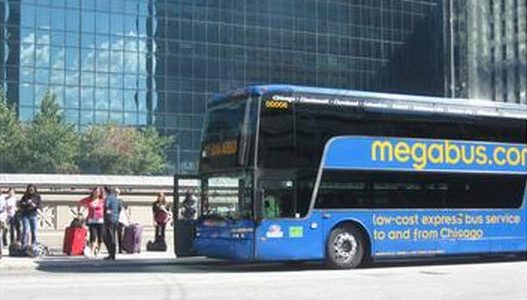
(Photo by the author)
Megabus double-decker at the Canal Street loading area in Chicago.
Intercity bus companies have made some surprising moves to win a bigger slice of the business-travel market in the past year. City-to-city express operators like BoltBus, GO Buses, and Megabus are upping their game, and several new luxury services have entered the mix with amenities designed to attract disenchanted frequent flyers who wouldn’t have dreamed of taking an intercity coach a few years ago. Think refreshments, attendants, roomy seating, and even shoe shining services.
A case in point is Vonlane, a new first-class service between Austin and Dallas that launched in May 2014 and plans to expand to Houston this March. A luxury operator, it seats only sixteen passengers, and an attendant serves snacks and drinks. It also offers a private six-seat “boardroom” for business meetings, and Wi-Fi and outlets, which are now almost standard on all bus lines. The service is also going after travelers that are willing to ride coaches to make connections to long-haul flights: Vonlane operates from the Hyatt Hotel at Dallas Love Field, where riders have access to a free airport shuttle. The fare isn’t cheap—around $100 each way—but it’s far less than flying. Southwest’s walk-up fare is $207.
Equally noteworthy is Royal Sprinter, launched by D.C.-based restaurateur Andy Seligman about a year ago. First-class bus service isn’t new to the Northeast Corridor. It’s already available from Manhattan to Boston via LimoLiner, to Washington, D.C. on Vamoose Gold, and to northern New England via both C&J and Dartmouth Coach. What differentiates Royal Sprinter is its small coaches with only eight seats on board, and satellite TV that accesses pay movie and sports channels. The company currently operates two trips each day between New York and Washington, D.C., with fares running around $95.
The powerhouse in express city-to-city service, Megabus, is also expanding from its traditional base of college students and urbanites. Taking aim at the business flyer, it introduced reserved seating in fifty-eight cities last year, with ten seats generally available at a cost of between one and nine dollars on each bus. Groups that reserve seating at a table can conduct business meetings during the trip.
Bus companies are also growing more sophisticated in “selling flexibility,” to allow passengers to change their departure times at only a modest expense, in sharp contrast to restrictive (and costly) airline policies. BoltBus and Megabus, for example, now allow changes up to a day or two in advance for $5 or less, plus any fare difference—a far cry from the $200 charged by American, Delta, and United.
Bus travel-booking websites, most notably Wanderu and Busbud, are also becoming more visible. Wanderu, in particular, offers convenient means of comparison-shopping Greyhound, BoltBus, Megabus, United Coachline Luxury Transportation, and others, much as Expedia, Orbitz, and Travelocity do for air travel.
What does the resurgence of intercity bus travel mean for U.S. transportation? The growth reminds me of the mid-1980s, when new airline hubs were popping up everywhere. Airlines vied to gain a foothold in markets before their competitors did, fearing that there was enough business for only one carrier, but all the new service led to enormous increases in the number of people flying. Unfortunately, there is a void in official data on what is really happening in the bus business. Schedule information isn’t stored in any public data bases and vanishes from company websites the moment a bus departs, complicating growth analyses of this industry. Air and rail travel data is much more easily available.
To help fill the void, for the past five years I’ve co-authored a year-in-review summary of what’s happening in this industry. Our study attempts to measure growth by recording schedule activity in published timetables and websites. We focus on branded carriers, including Megabus, Greyhound, and Trailways, because small carriers that intentionally stay below the radar, or only serve specialized niches (such as Chinatown operators and airport shuttles) are too hard to track.
Last year, we observed a 2.1 percent increase in daily scheduled operations on the 107 carriers that met our criteria. While bus service grew, Amtrak train-miles held constant, and the number of airline flights diminished by 3.5 percent. Although bus companies aren’t expanding their schedules at the frenetic pace of past years, when growth often exceeded 5 percent, the sector is still growing much faster than other modes. Plus, ridership appears to be growing at an even faster rate. In October, Megabus reported that its sales were up 13.5 percent over the past year.
How quickly senior corporate executives on expense accounts will embrace new luxury bus services remains to be seen. Regardless, travel markets of 350 miles or less are about more than college kids and bargain-hunters looking for the cheapest way to get from Point A to Point B.
Joseph Schwieterman is professor of public service and director of the Chaddick Institute for Metropolitan Development at DePaul University.



